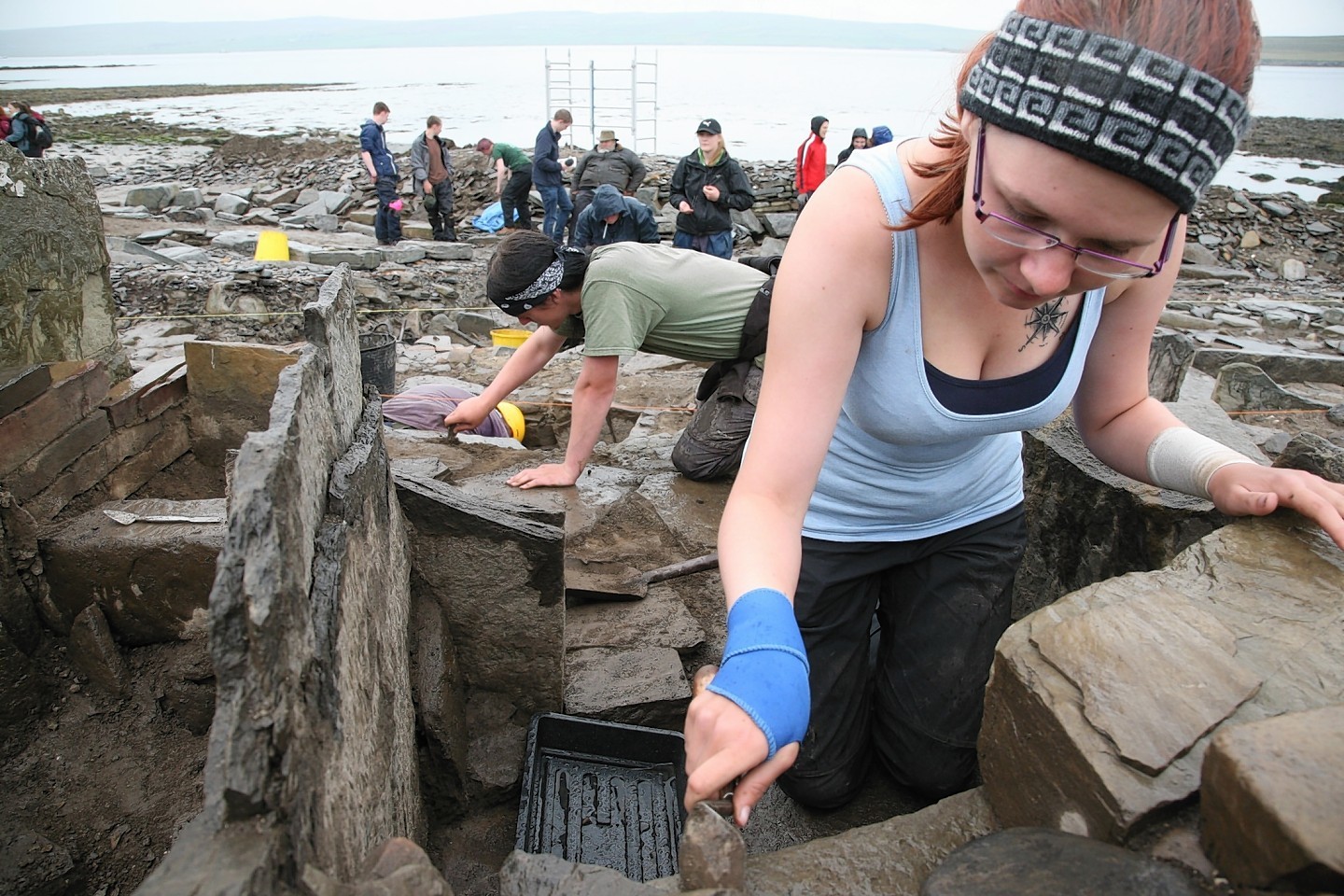Three years of digging which has unearthed some 4,000 years worth of artefacts from an Orkney coastline could be washed away in one fell swoop due to the site’s precarious location on Rousay.
That is the fear of Dr Stephen Dockrill from Bradford University, leader of an archaeological excavation site at the Bay of Swandro, which has discovered more than 100 items since work began in 2011.
He said: “We have come back with our fingers crossed every year since we have been working here – It is that one big storm that could take it all away.”
Ironically it is the sea which has helped the team make some of their discoveries as it eroded several layers of ground to reveal more and more of the past.
It began in 2010 when Dr Julie Bond, also from Bradford University, noticed some stones which were different from the pebbles on the beach.
hen, the team has been able to calculate how climatic changes, and rising sea levels, have affected the area over the years.
Mr Dockrill added: “We have been digging down below sea level in places which means we haven’t found the original ground level, therefore we have actually seen quite a rise in sea level, probably at least several metres in the last thousand years.”
Among the most significant finds has been an intact Neolithic Chambered Cairn, while soil samples taken from the site contained small fragments of glass, and evidence of copper alloy casting, and metal work.
T
here are several structures on the site including what is believed to be an Iron Age house, Pictish houses and a chambered tomb. It is also thought that the site may have been of a high status when the Vikings came along.
Work will now be continuing with the hope to do as much as possible before winter, while team hope to return next year provided they are granted permission to continue to excavate and they receive sufficient funding.
“What we are hoping to do over time is to give an idea of how people lived on the island, from the very first farmers, all the way through to the clearances in the 19th century,” said Mr Dockrill.
